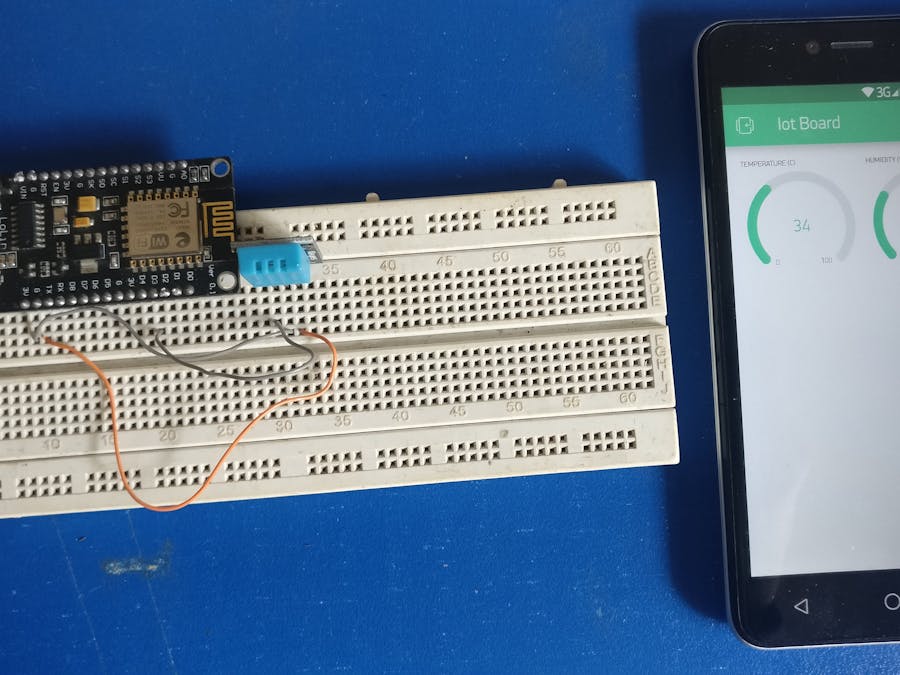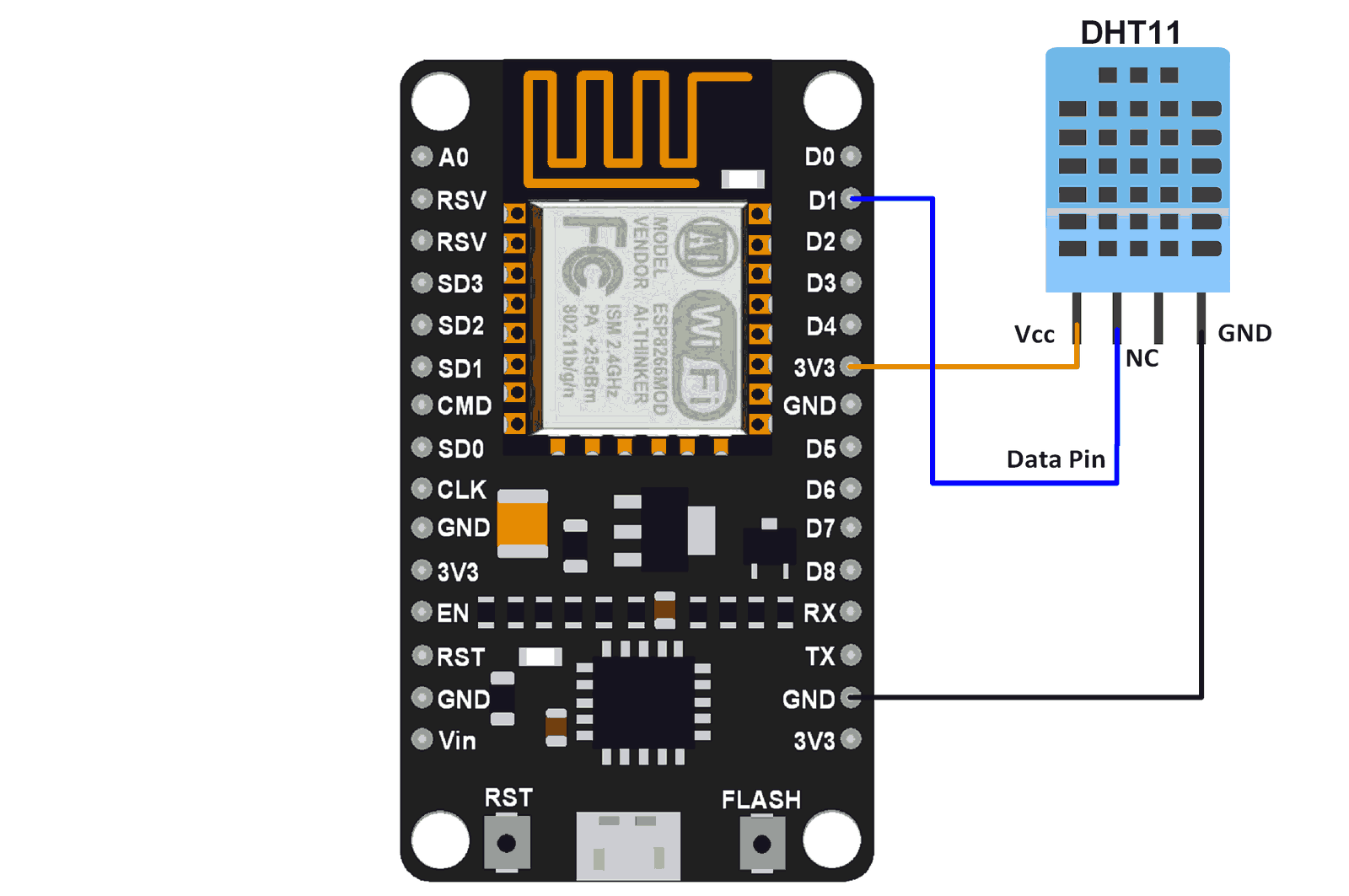This project is related to initial steps in IoT world, here we will interface DHT11/DHT22 sensor with NodeMCU or other ESP8266 based board and receive data on internet we are going to use Blynk application, use the following tutorial link if you are not familiar with blynk application.
For Blynk (it require only few minutes): https://docs.blynk.cc
After this you are require to add esp8266 boards in your Arduino IDE software, use following link
To add esp8266 boards in Arduino IDE software: https://randomnerdtutorials.com/how-to-install-esp...
or you can easily find other tutorials for these two steps.
There are simple hardware connections, you are not going to deal with any messy connections,
Components:1. DHT11 or DHT22 https://amzn.to/2QfQXL8
2. NodeMCU https://amzn.to/2Q4Y5da
3. 5V supply (micro USB cable or you can use Vin pin of nodemcu for input supply)
4. Some jumper cables
Connections:Use the following diagrams for complete understanding of connection.
Connect data/signal pin of DHT sensor to any GPIO of nodeMCU, the same pin number you will have to mention in your code.
Blynk ProjectCheck out the attached video and follow the steps1. Create a new Blynk project, copy its authorization token you received and add two “Gauge” from widget box.
2. Click at the one of newly added widgets, select virtual pin V5 and label it as “Temperature”, similarly select virtual pin V6 for second widget and label it as “Humidity”. Set value display range for these two widgets from 0 to 100.
Other details can be observe in video.
Program Your BoardFirst you need to include Blynk(download the latest library from blynk official website) and DHT library in your Arduino IDE software, download the attached files and add them in your Arduino IDE library folder or whatever the procedure you use for adding libraries.
After adding libraries, copy the following code and program your NodeMCU(I know you are expert in it )
Wait!!!!!!!! wait please, before programming your nodeMCU, must add your blynk project token and local Wi-Fi router credentials in your code,
best of luck.
Check Sensor Data at Blynk ApplicationMake sure your NODEmcu is programmed, your Blynk project window is complete(you have defined virual pins to both widgets) and your hardware is ready. Now connect your mobile WiFi and go live with your blynk application(check video), here you can see temperature and humidity value displayed by your widgets.
Your Attention RequireHope this project will give you a lil push in IoT world, don’t forget to share your remarks and subscribe our youtube channel for encouragement.
Thank You :)

















Comments
Please log in or sign up to comment.